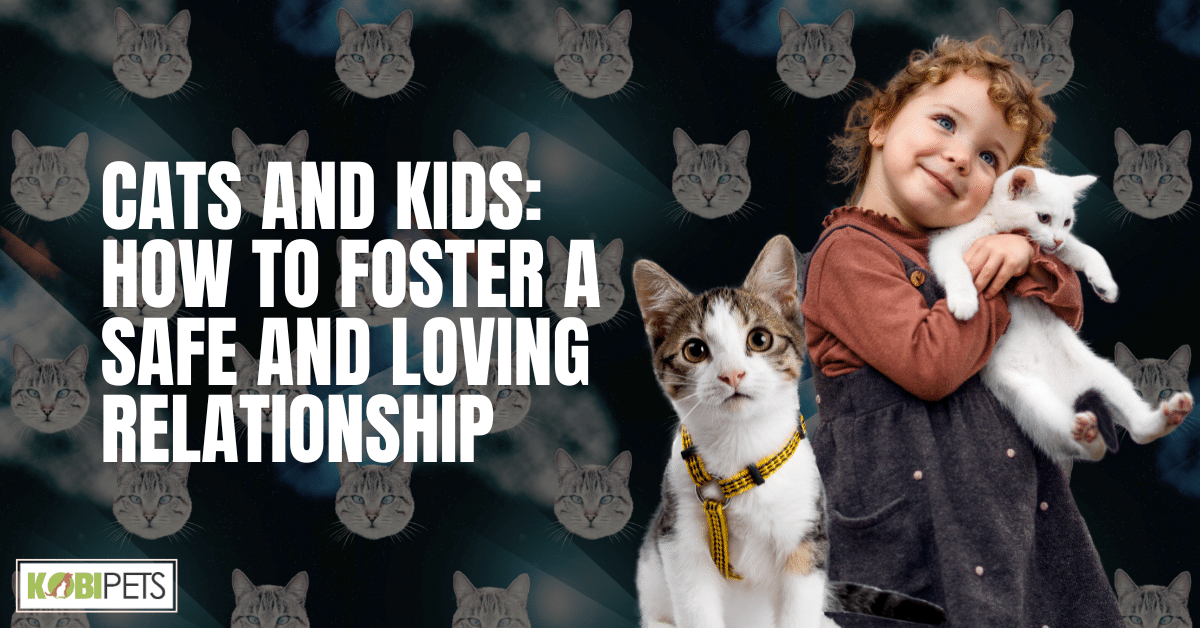
Fostering a safe and loving relationship between cats and kids begins with education and supervision. Teach children to approach cats gently, respecting their boundaries, and never to pull their tails or ears. Provide a designated safe space for cats to retreat to when they need a break, ensuring a harmonious coexistence that benefits both feline companions and young family members.
Cats and kids can make a delightful pair, but ensuring their harmony is crucial. This article delves into fostering a secure and affectionate bond between feline companions and young family members. We’ll emphasize the significance of safety and well-being for both, offering valuable insights for a happier household.
Understanding Cat Behavior
Cats are truly fascinating creatures, and unlocking the mysteries of their behavior is a fascinating journey that can help kids forge deeper connections with their feline friends. In this section, we will explore some of the most common cat behaviors, including their body language and vocalizations, and how these insights can contribute to a more meaningful and respectful relationship between cats and kids.
1. Body Language
Cats have an intricate and expressive system of body language that they use to communicate their feelings and intentions. Encouraging kids to observe and decode these signals can be both enlightening and fun. For instance, a cat’s tail is like a flag that conveys their emotions.
A raised tail often means a content and friendly cat, while a puffed-up tail can be a sign of fear or aggression. The position of their ears also speaks volumes; ears forward indicate curiosity and interest, while flattened ears can signify irritation or stress.

2. Communication
Cats communicate through a range of vocalizations, from soothing purrs to warning hisses. Teaching kids the meanings behind these sounds can be both educational and enjoyable. Purring, for instance, is often a sign of contentment and relaxation. Hissing or growling, on the other hand, are defensive responses, signaling discomfort or anger.
Encouraging kids to listen to these sounds and respond appropriately can deepen their understanding of their cat’s emotional state and enhance their ability to interact in a way that is both safe and enjoyable for both parties.

3. Respecting Personal Space
One of the key elements in fostering a safe and loving relationship between cats and kids is emphasizing the importance of respecting a cat’s personal space. Cats, like people, need solitude from time to time.
When a cat retreats to a quiet corner or a cozy hiding spot, it’s crucial for kids to understand that this is not an invitation for play. By explaining this concept, kids can learn to recognize when a cat wants to be left alone and to respect these boundaries, reducing the likelihood of stress or conflict.

4. Petting and Handling
Kids naturally want to pet and cuddle with their feline companions, and this can be a wonderful way to bond. However, it’s essential to teach them the proper way to do so. Emphasize the importance of gentle petting, avoiding sensitive areas like the belly, and letting the cat set the pace. Show them how to support a cat’s body if they want to hold it, ensuring that the cat feels safe and secure.
Encourage kids to start with short interactions and pay close attention to the cat’s response. This not only ensures the cat’s comfort but also helps kids develop empathy and consideration for the animal’s feelings.
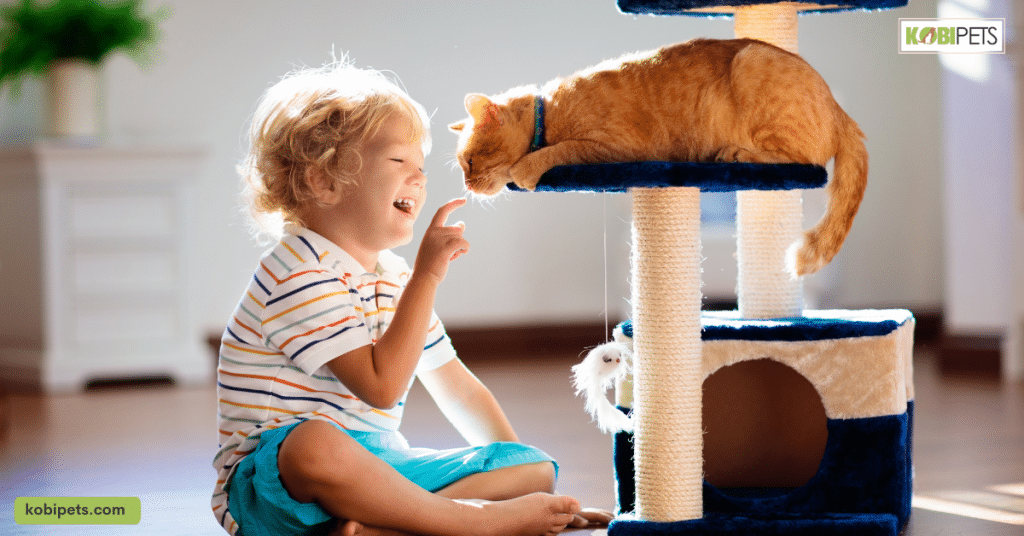
Educating Kids
Fostering a positive connection between children and cats hinges on teaching kids how to interact with their feline friends safely and respectfully. This section offers valuable tips and guidelines to ensure that children and cats coexist in an environment characterized by mutual understanding and care.
Starting from a young age, children should be introduced to the basics of cat behavior and communication. Demonstrating respect by teaching gentle approaches and respecting a cat’s boundaries is essential. Establishing age-appropriate rules and involving kids in cat care routines instill empathy and responsibility, ultimately leading to a nurturing relationship between kids and their furry companions.
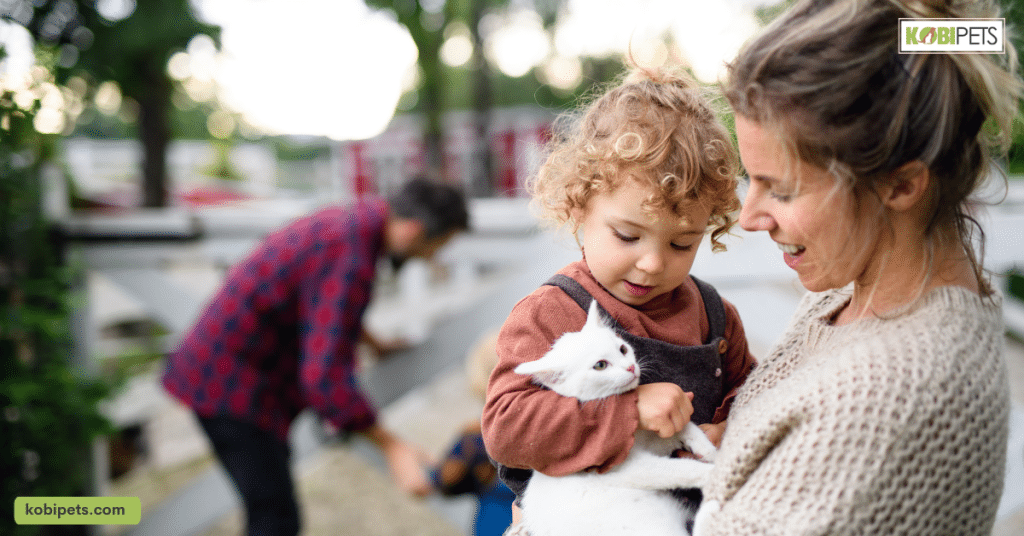
Supervision and Playtime
In this section, we’ll delve into the significance of adult supervision during interactions between these two special beings, particularly when playtime is in full swing. By understanding the role supervision plays, we can ensure safety, happiness, and a lifelong bond between our feline friends and the little ones.
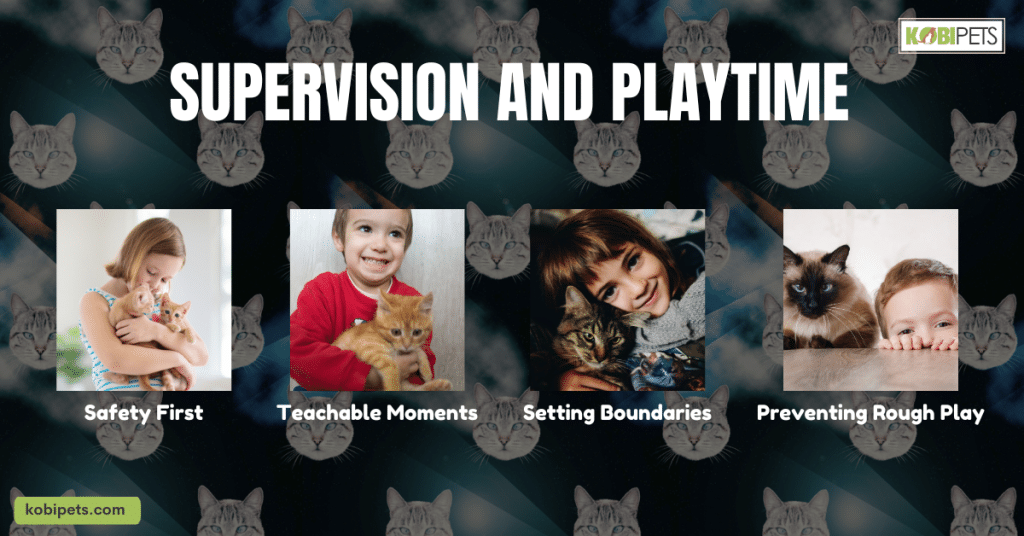
Supervision and Playtime
- Safety First: Cats and kids alike can get carried away during play. Adult supervision ensures that play remains safe, preventing unintentional harm or stress to either party.
- Teachable Moments: Supervision offers opportunities for teachable moments. Adults can guide kids on appropriate ways to play with their cats, emphasizing gentle and respectful behavior.
- Setting Boundaries: During play, cats may need breaks or wish to disengage. Adults can monitor these cues and teach children to recognize when their feline friends need space.
- Preventing Rough Play: Sometimes, kids might not realize when their play becomes too rough for a cat. Supervision allows adults to intervene, preventing excessive aggression or stress.
Supervision is the cornerstone of a safe and enjoyable relationship between cats and kids. It provides guidance, teaches valuable lessons, and ensures that playtime remains a source of joy and bonding.
Creating Safe Spaces
Designated safe spaces for your feline companions are essential to ensuring their comfort and well-being in a household with kids. These retreats provide cats with a sanctuary where they can relax, recharge, and feel secure when they need a break from the hustle and bustle.
To set up these spaces effectively, consider choosing quiet, low-traffic areas, and furnish them with cozy beds, scratching posts, and toys. Ensure these areas are off-limits to children when the cat is inside, and teach kids to respect these boundaries.
By creating and maintaining these safe havens, you’re not only promoting a harmonious coexistence but also nurturing an environment where both cats and children can thrive in harmony.
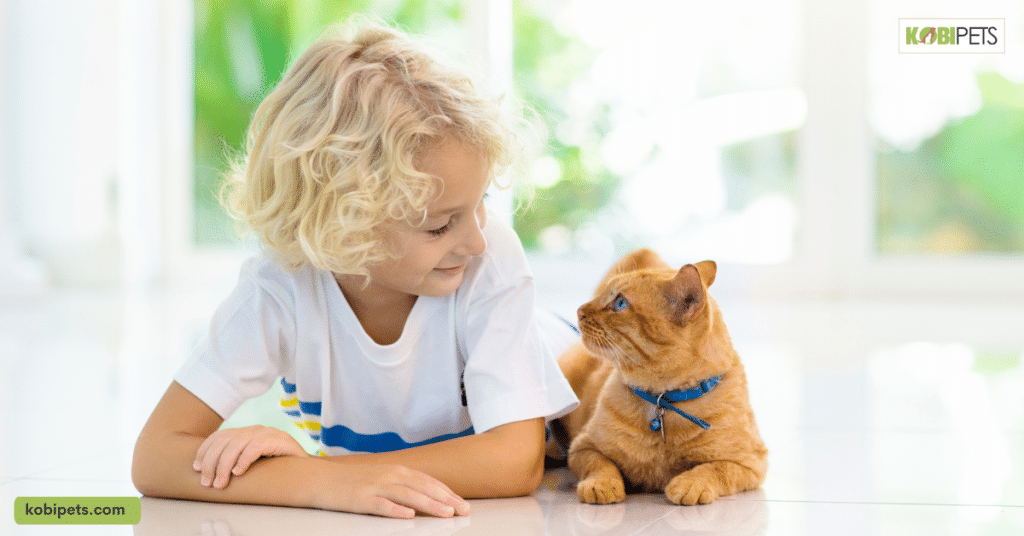
Problem Solving and Conflict Resolution
In this section, we’ll delve into problem-solving and conflict resolution, addressing common issues that may arise, from allergies to behavioral clashes. By equipping ourselves with effective strategies, we can ensure a harmonious coexistence between our beloved cats and the young members of our families.
Common Challenges and Solutions:
| Challenge | Solution |
|---|---|
| Allergies | Ensure proper grooming for cats, frequent vacuuming, and minimize allergen exposure. |
| Litter Box Issues | Maintain a clean litter box, teach kids to respect it, and consider a separate area for the cat. |
| Scratching Furniture | Provide scratching posts, and the deterrents for furniture, and teach kids to redirect the cat’s behavior. |
| Fear or Anxiety | Create safe spaces for the cat, introduce gradual exposure to children, and consult a vet if needed. |
| Aggressive Behavior | Identify triggers, use positive reinforcement, and consider professional training for both cat and the the child. |
In the dynamic world of cats and kids, challenges are bound to arise, but they need not overshadow the joys of their companionship. By addressing common issues and employing effective conflict resolution strategies, we can pave the way for a peaceful coexistence where both cats and children thrive.
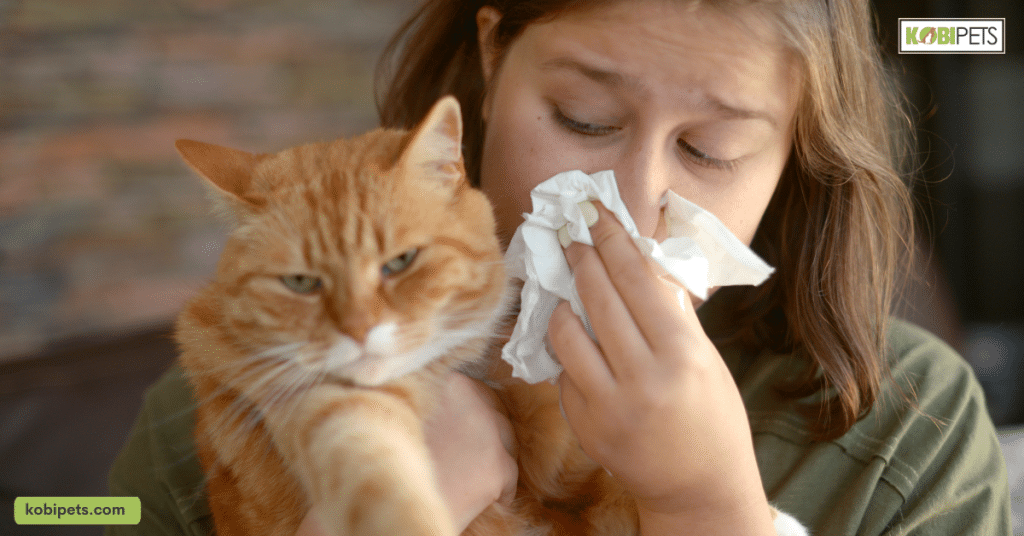
In conclusion
Fostering a safe and loving relationship between cats and kids is a journey filled with learning and growth for both parties. By understanding cat behavior, educating children, supervising interactions, creating safe spaces, and addressing challenges with effective conflict resolution, we can create a harmonious household where these furry and young companions coexist in peace and happiness.
Through patience, empathy, and a commitment to their well-being, we ensure that the bonds formed between our cats and children are built on love, respect, and enduring friendship.






